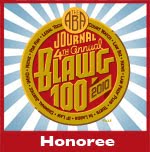Utah Federal Court Explains The Nature Of Facebook
Leave it to the courts to explain to us the nature of social media. Let’s take a look at the very, very recent Larada Scis., Inc. v. Skinner, No. 2:15-CV-0399-JNP, 2015 WL 7768836 (D. Utah Dec. 2, 2015), a patent case. The court was called upon to undertake a personal jurisdiction analysis and analyze the website of one of the defendants. The question was whether the Picky Pam website evidence purposeful availment of the forum, and the court analyze the purported interactive nature of the website at issue in its analysis. It’s an interesting – and brand new – opinion on this issue, but we just wanted to point to the paragraph in which the court explains to the reader the nature of Facebook:
. . . [M]aintaining an interactive website is no longer the sole purview of corporations. In fact, with the invention of social media, many individuals, to say nothing of organizations, maintain an interactive website. In a matter of minutes, an individual can create a Facebook account and upload content to his or her own “Facebook page.” That page may allow all other Facebook users to interact with it. The level of interactivity on even the most basic Facebook page arguably exceeds that of even the most interactive website in 1997 . . . . It is difficult to envision a website that is more interactive than the average Facebook page. Indeed, a principal purpose of social media is to facilitate interactions between users.
See id. at *4 (footnotes omitted).
It’s always fun when federal courts attempt to explain the phenomena of social media. Of course, some explanation is required in a jurisdictional opinion (and the court was analyzing a framework established by a 1997 Pennsylvania opinion). But, in this day in age, we all know of Facebook, and by its very nature, it is interactive, as the court does note.
Oh, well.















